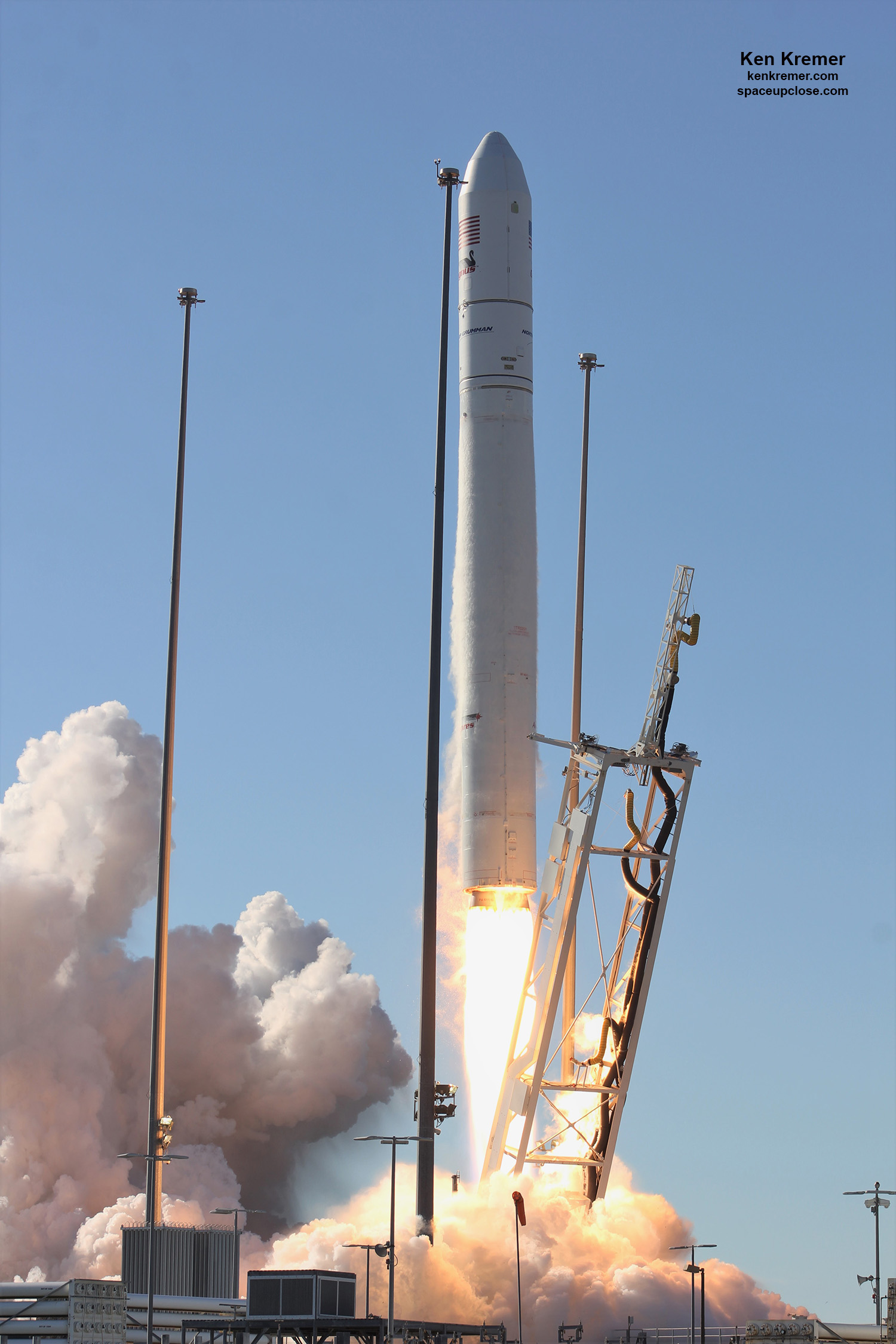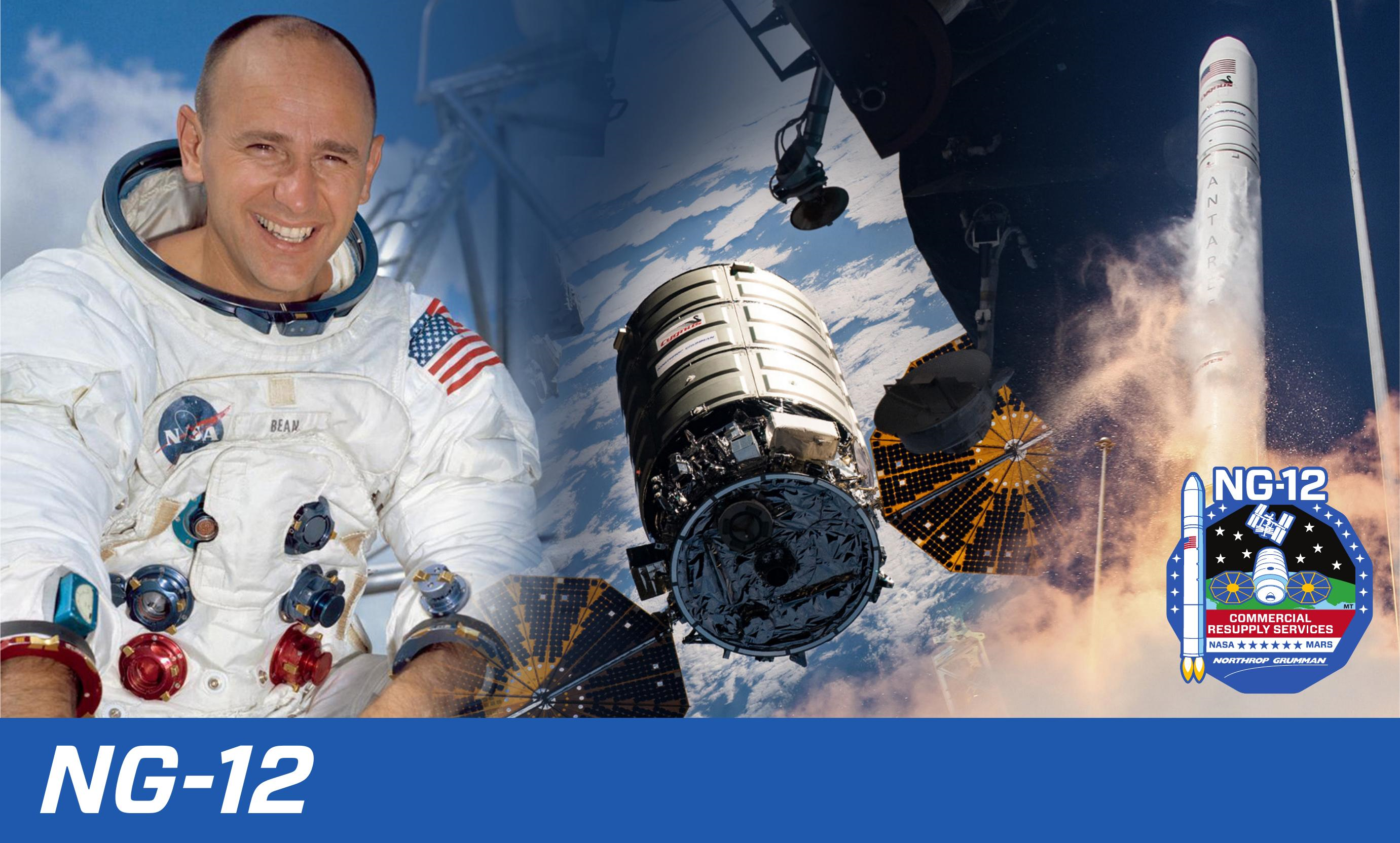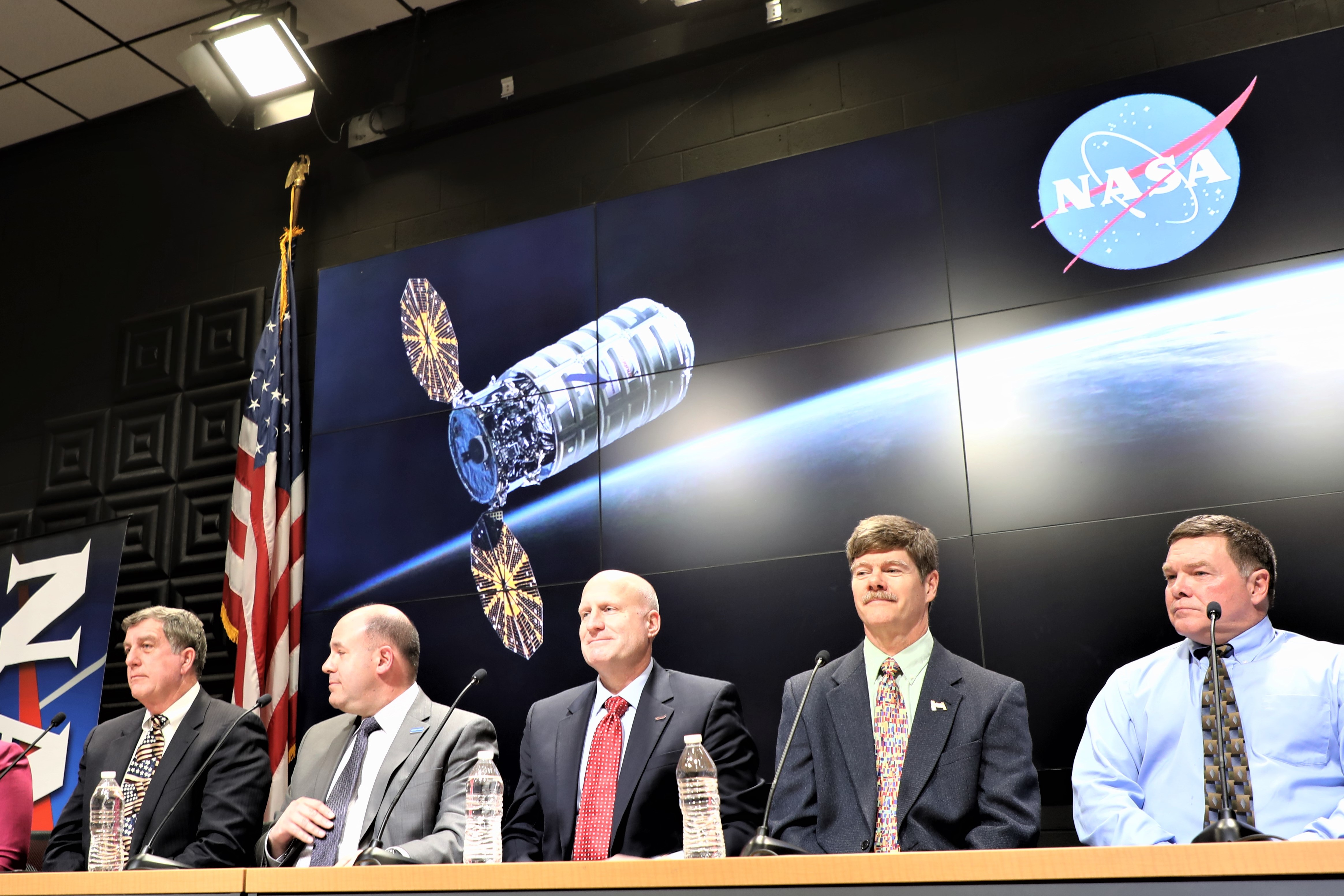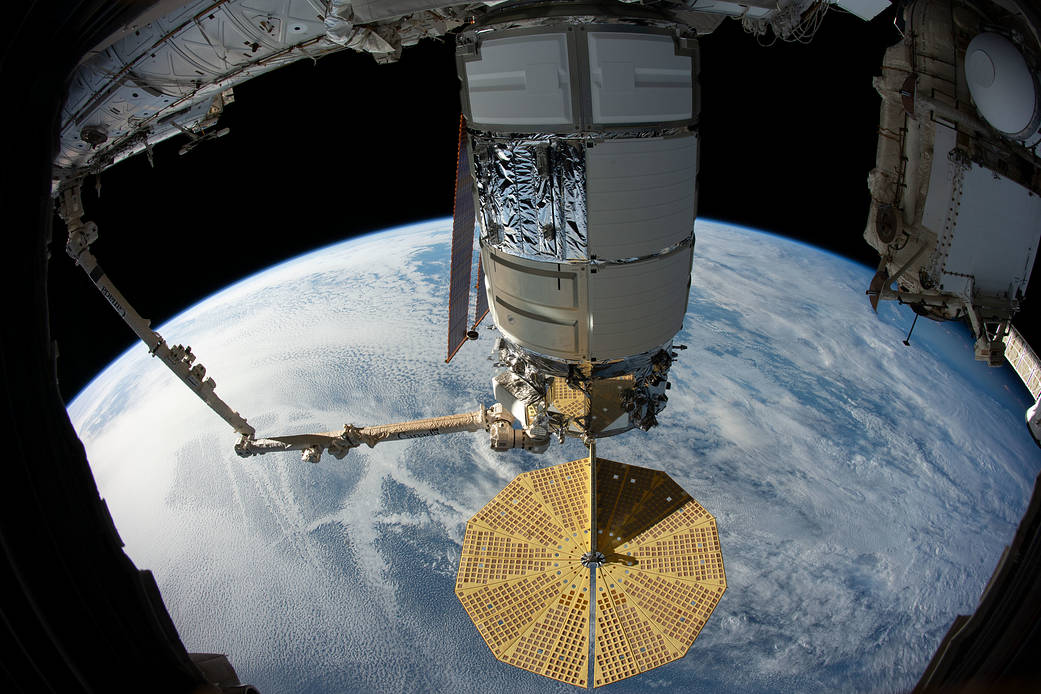
For SpaceUpClose.com & RocketSTEM
NASA WALLOPS FLIGHT FACILITY, VA – A pair of NASA’s female American astronauts successfully grappled the Cygnus commercial cargo freighter using the Canadian-built hi tech robotic arm Monday morning, Nov. 4 after its flawless and beautiful blastoff from NASA’s mid-Atlantic launch base on Virginia’s shores on Saturday, Nov. 2 and two day voyage from the Earth to arrival at the International Space Station (ISS) delivering 4 tons NASA science.
After a 40 hour trek through low Earth orbit Cygnus arrived in the vicinity of the ISS in the wee hours of Monday morning.
As the Cygnus NG-12 space freighter fired its onboard thrusters to maneuver ever closer to the ISS, NASA astronaut Jessica Meir with fellow Flight Engineer Christina Koch as her back up maneuvered the Canadarm2 robotic arm to reach out and capture the Northrop Grumman vessel at 4:10 a.m. EST.
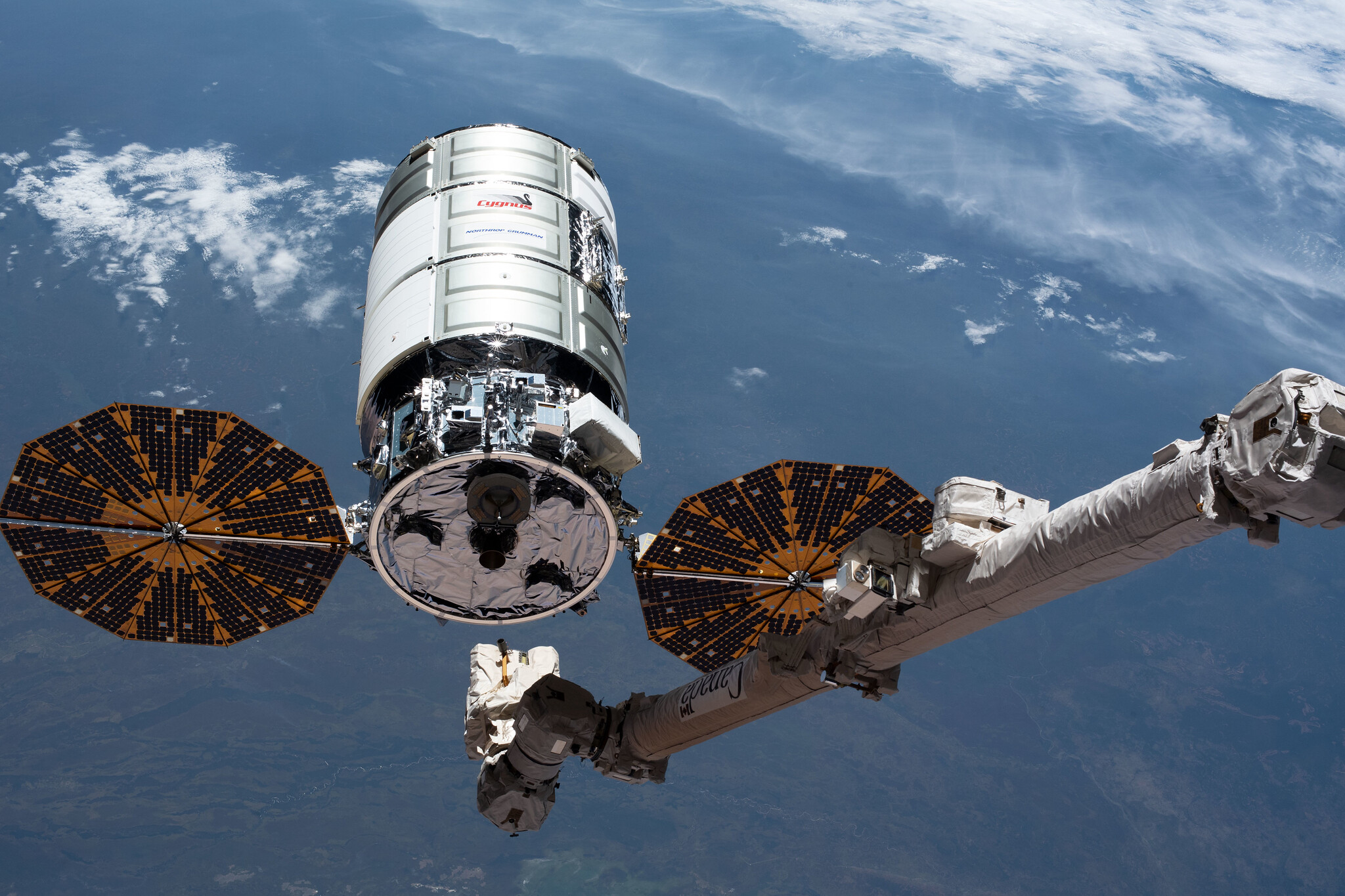
The station was flying some 250 miles (400 km) over Madagascar when Cygnus was captured.
The Cygnus spacecraft, dubbed the SS Alan Bean, is named after the late Apollo 12 moonwalker and Skylab astronaut who died on May 26, 2018, at the age of 86.
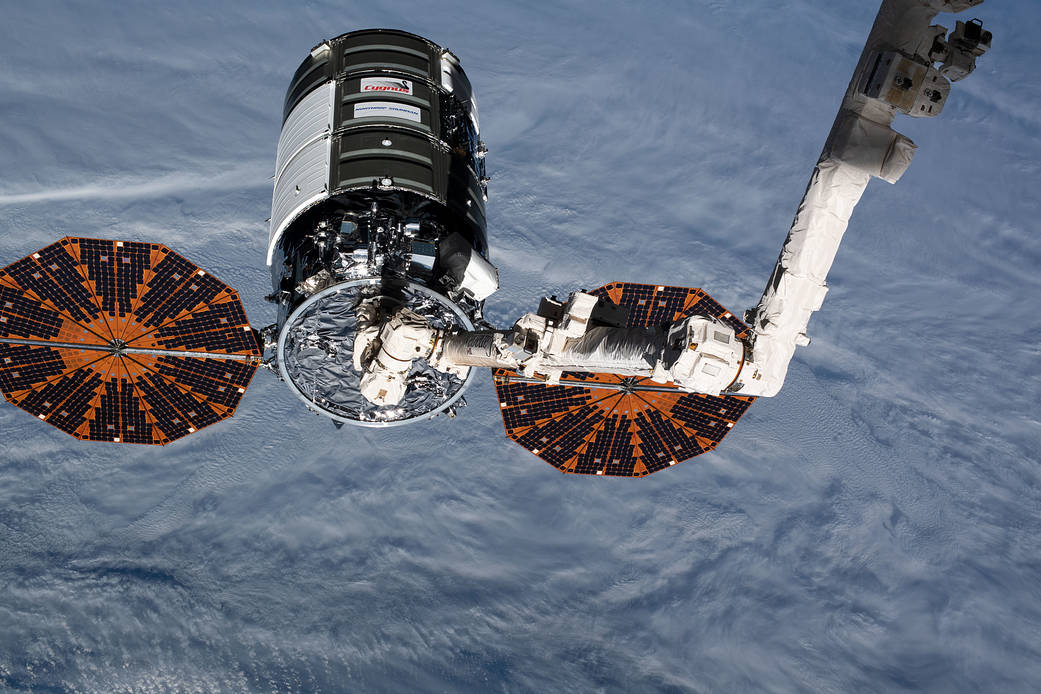
The SS Alan Bean NG-12 resupply ship is jam packed with 4 tons of precious NASA science and hardware including a space cookie oven, a crew of micetonauts, NRO cubesats, a space radiation vest and newly developed EVA tools for spacewalking astronauts needed to extend the life of the critical AMS dark matter experiment attached to the orbiting outposts truss.
Fellow ISS Expedition 61 crewmember NASA astronaut Andrew Morgan monitored Cygnus systems during its approach.
Ground controllers at Mission Control in Houston then took command of the station’s arm.
They worked to slowly rotate and then carefully and methodically maneuver Cygnus for installation on the bottom of the station’s Unity module.
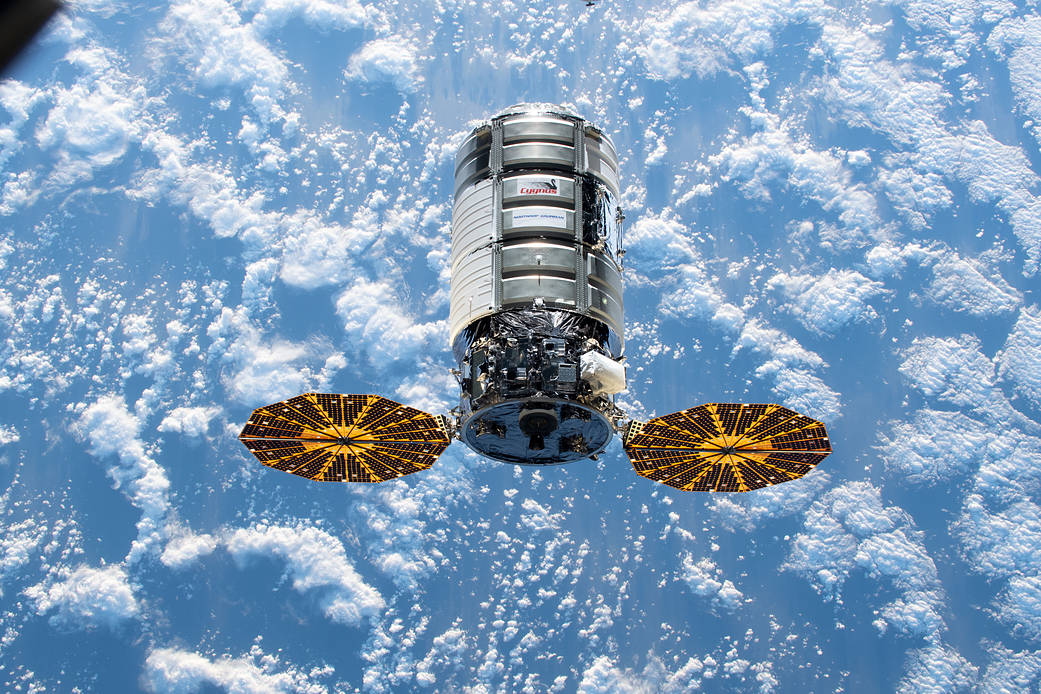
At last Cygnus was bolted into place on the Earth-facing port of the Unity module at 6:21 a.m. EST as the ISS was flying over the south Pacific.
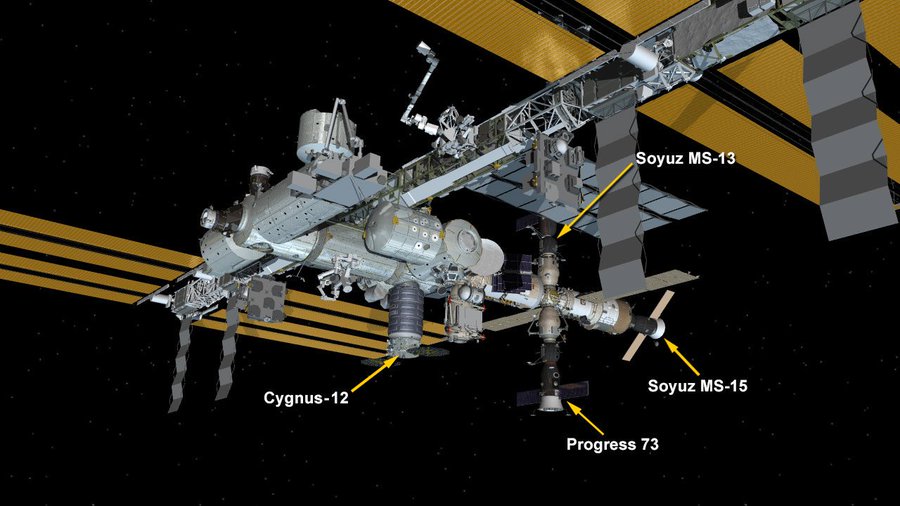
Cygnus reached the ISS following the breakfast time blastoff of the Antares Cygnus NG-12 mission on Northrop Grumman’s 12th commercial resupply mission to the space station from Virginia Space’s Mid-Atlantic Regional Spaceport occurred right on time at NASA’s Wallops Flight Facility seaside launch pad 0A at 9:59 a.m. EDT Saturday, Nov. 2, 2019 from launch pad 0A.
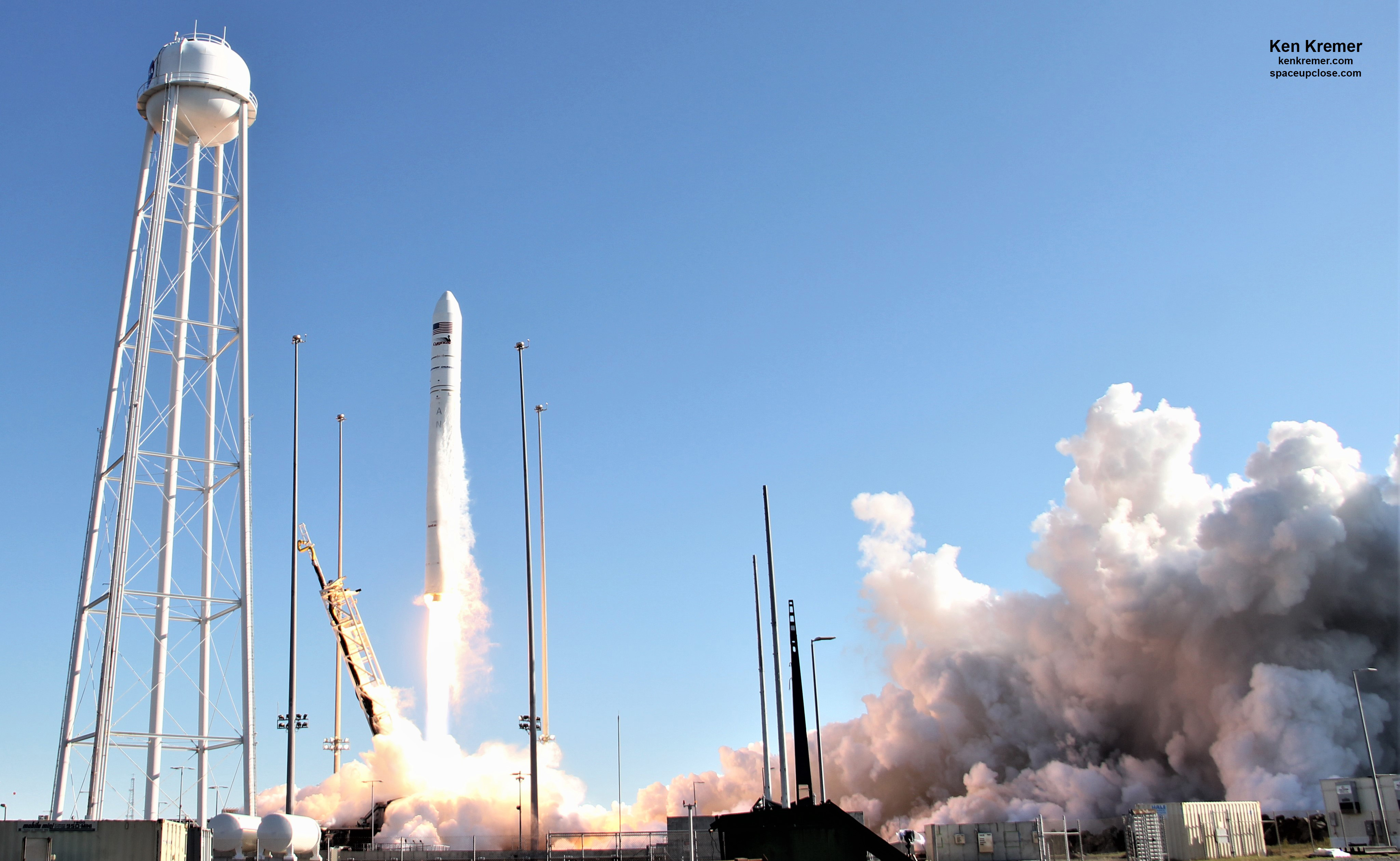
The ISS is currently home to a six person multinational crew.
The Cygnus NG-12 spacecraft will stay at the station for two months as the crew now starts unloading the cache of cargo.
Cygnus will depart in January after a planned 70 day stay.
After it departs it will dispose of several thousand pounds of trash through its fiery reentry into Earth’s atmosphere.
The Cygnus NG-12 spacecraft is loaded with 8,168 pounds (3705 kg) of research, crew supplies, and hardware – the heaviest ever load launched by an Antares from Wallops.
Among the research hardware is the Zero-G Oven to bake the first ‘Cookies in Space’ , the AstroRad radiation protection vest, the Made in Space recycler for 3D printing as well as gear and EVA spacewalk tools to repair the Alpha Magnetic Spectrometer experiment looking back to the origins of the Universe.
Here’s a NASA description of some of the NASA science investigations onboard:
More Probing of Mysteries of the Universe
This mission carries components needed to prolong the operational life of Alpha Magnetic Spectrometer-02 (AMS-02). In a series of spacewalks planned in the coming weeks, astronauts will cut and reconnect fluid lines on the instrument, a feat not done before in space, which could prove valuable for future missions at NASA’s upcoming lunar Gateway for the Artemis program or missions to Mars.
Testing Personal Protective Equipment for Astronauts
The AstroRad Vest tests a special garment designed to protect astronauts from radiation caused by unpredictable solar particle events. Astronauts will provide input on the garment as they wear it while performing daily tasks. Use of the vest could protect crew members on missions to the Moon and Mars.
The Zero-G Oven examines heat transfer properties and the process of baking food in microgravity. It uses an oven designed specifically for use aboard the space station, and may have application on future long-duration missions by offering a way to increase variety in flavor and nutrition of food for crew members.
3D Printing with Recycled Materials
The Made in Space Recycler will test systems needed to reprocess plastic into 3D printing filament that can then be transferred for use to the Made in Space Manufacturing Device, a 3D printer that has operated on the orbiting laboratory since 2016. This has implications for space conservation and deep space missions.
Read our story about the Zero-G oven onboard here.
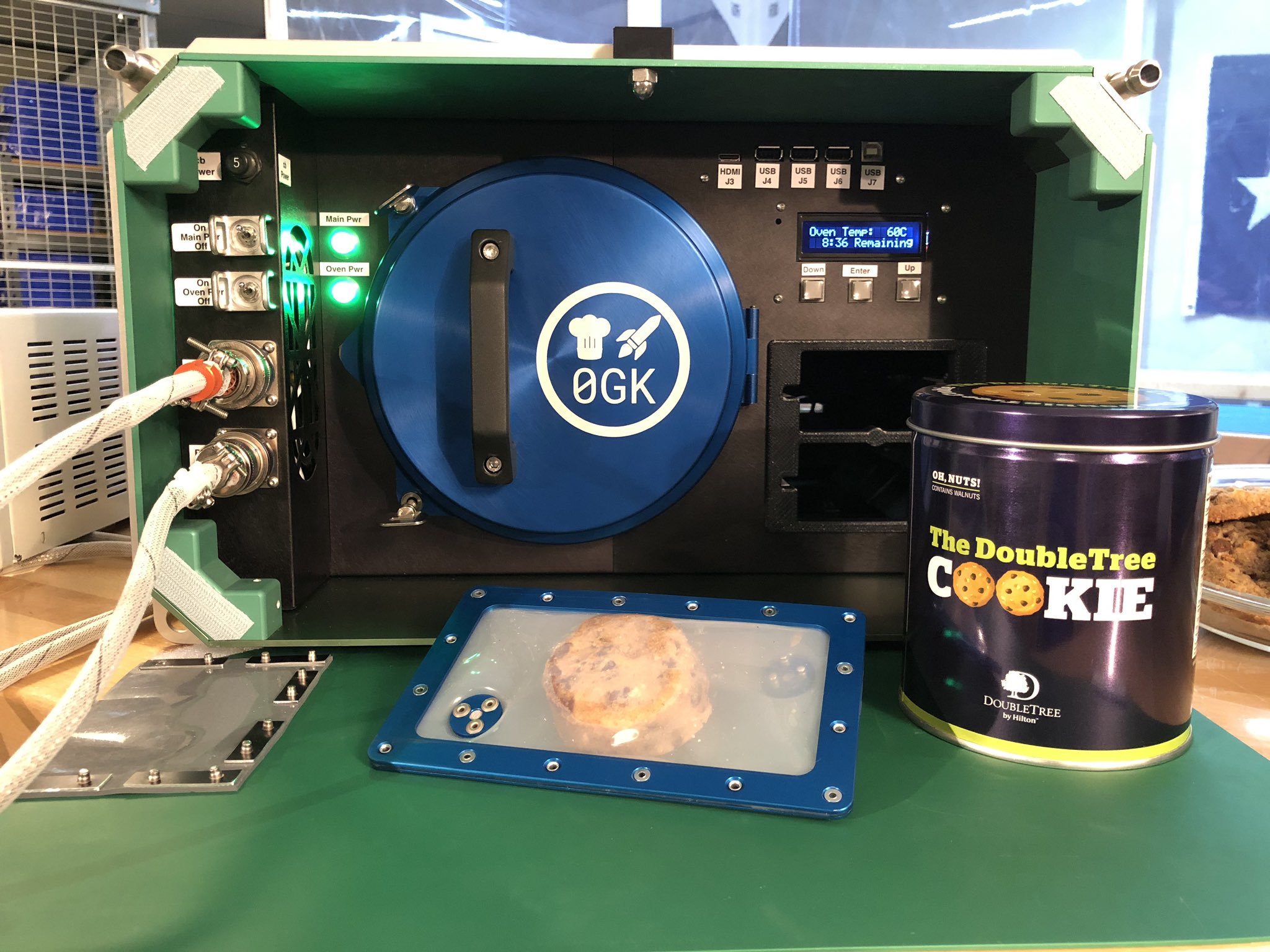
Watch my BBC World TV News post launch interview here:
This was the first cargo mission flown under Northrop Grumman’s CRS-2 contract with NASA starting this fall of 2019. Under Northrop Grumman’s Commercial Resupply Services 1 contract, the company flew 11 missions to the ISS.
Watch my launch video here:
Video Caption: North and South – Watch and listen to the power of Antares NG-12 blastoff looking north and south at the NASA Wallops launch pad from 180 degrees apart. Launch of Northrop Grumman Antares rocket carrying Cygnus NG-12 cargo freighter roars to life on November 2, 2019 from Pad-0A on NASA’s Wallops Flight Facility in Virginia on 12th resupply mission for NASA to the International Space Station – as seen in these video cameras stationed north and south at pad. Credit: Ken Kremer/kenkremer.com/spaceupclose.com
Under the CRS-2 contract Northrop Grumman will fly at least 6 Cygnus missions through 2024.
The next launch of NG-13 is slated for February 2020.
Stay tuned here for Ken’s continuing Earth and Planetary science and human spaceflight news: www.kenkremer.com –www.spaceupclose.com – twitter @ken_kremer – email: ken at kenkremer.com
Dr. Kremer is a research scientist and journalist based in the KSC area, active in outreach and interviewed regularly on TV and radio about space topics.
………….
Ken’s photos are for sale and he is available for lectures and outreach events
Ken’s upcoming outreach events:
Nov 10: 7 PM, Quality Inn Kennedy Space Center, Titusville, FL. “SpaceX Starlink Launch Nov 11.” Free in hotel lobby
Nov 23, 1 PM, Titusville, FL: “50th Anniversary Apollo 12 and NASA’s Human Return to the Moon with Project Artemis” at American Space Museum, Titusville, FL. Lecture free. Open to the public.
Website: www.spacewalkoffame.org
